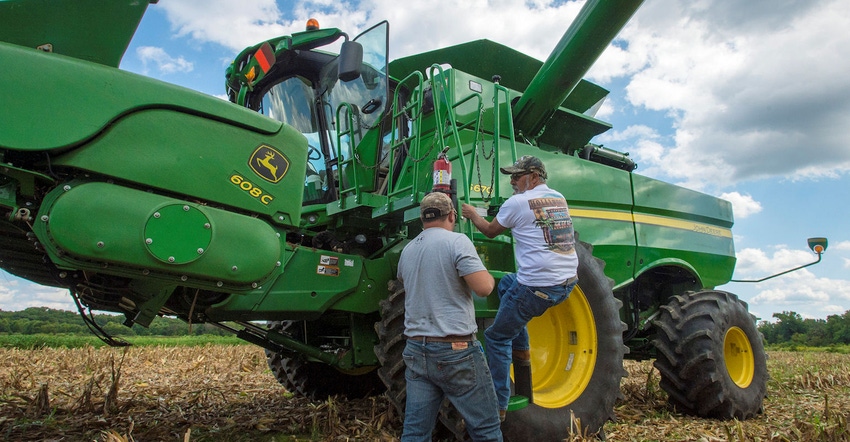Most common agribusiness insurance claims released
Thirty-three children injured every day in agriculture-related accidents.

According to the National Institute for Occupational Safety & Health (NIOSH), agriculture ranks among the most hazardous industries due to a very high risk for fatal and non-fatal injuries. In 2016, 417 farmers and farm workers died from a work-related injury, resulting in a fatality rate of 21.4 deaths per 100,000 workers. Transportation incidents, which include tractor overturns, were the leading cause of death for these farmers and farm workers.
What makes farming unique, however, is that it is one of few industries in which family members are also at risk for injury.
To help educate agribusiness professionals about costly trends in the industry, Nationwide, the number-one farm insurer in the U.S., released this week its most common commercial agribusiness insurance claims. Over the last three years, the top 10 types of agribusiness claims have accounted for more than 50,000 claims received by the company.
The table shows the top 10 commercial agribusiness claims received by Nationwide in 2017:
Top 10 Agribusiness Insurance Claims |
1. Motor vehicle accidents |
2. Workers compensation for disability or death |
3. Misapplication of chemicals or drift |
4. Slip, fall or injury |
5. Food-related claim |
6. Animal-caused damage or bite |
7. Glass breakage |
8. Wind damage |
9. Hail or lightning damage |
10. Fire damage or loss |
"By sharing our top claims data, we hope to help agribusiness owners recognize areas of their operation that may need increased safety precautions," Carol Alvarez, vice president of claims for Nationwide, said. "These national trends can help business owners pinpoint areas where they can take extra measure to keep their employees, products and equipment safe."
Motor vehicle accidents were the most common commercial agribusiness claim Nationwide received in 2017. Over the past three years, motor vehicles accidents have accounted for more than 20,00 total commercial agribusiness claims. Nationwide's data for these accidents show the following trends in frequency and severity:
Most Frequent Accidents | Accidents Causing Most Significant Damage |
1. Rear-end accidents | 1. Overturned vehicles |
2. Backing into vehicles | 2. Head-on collisions |
3. Accidental strike of stationary object | 3. Intersection accidents |
Nationwide recommends the following risk management tips to help agribusiness professionals reduce motor vehicle accidents and keep their employees safe:
Embrace safety technology by equipping vehicles with collision mitigation and telematics monitoring systems;
Develop standard hiring criteria for drivers that is comprised of a new driver orientation and documented training;
Develop "safe following distance" and "distracted driving" policies that include comprehensive training and procedure enforcement;
Be aware of advanced safety benefits in newer trucks, such as electronic stability control systems to prevent overturn, and
Provide additional documented training for commercial truck drivers with tanker endorsements and those carrying high-center-of-gravity loads.
Childhood ag-related injuries
NIOSH reported that an estimated 893,000 youth under 20 years of age resided on farms in 2014, with about 454,000 youth performing farm work. In addition to the youth who live on farms, an estimated 266,000 youth were also hired to work on U.S. farms in 2014.
The "2017 Childhood Agricultural Injuries Fact Sheet," compiled by the National Children's Center for Rural & Agricultural Health & Safety (NCCRAHS) in Marshfield, Wis., reported that 33 children are injured each day, and every three days, a child dies in an agriculture-related incident. The leading sources of fatalities were machinery (25%), motor vehicles/all-terrain vehicles (17%) and drowning (16%).
“While there are many benefits to growing up on a farm, it is well known that farms are inherently dangerous. Keeping children safe is a priority, because we want them to grow up happy and healthy,” NCCRAHS states on its website.
NCCRAHS created the “Child/Youth Agricultural Safety” checklist to be used to perform safety checks on the farm. Access the checklist here.
About the Author(s)
You May Also Like



